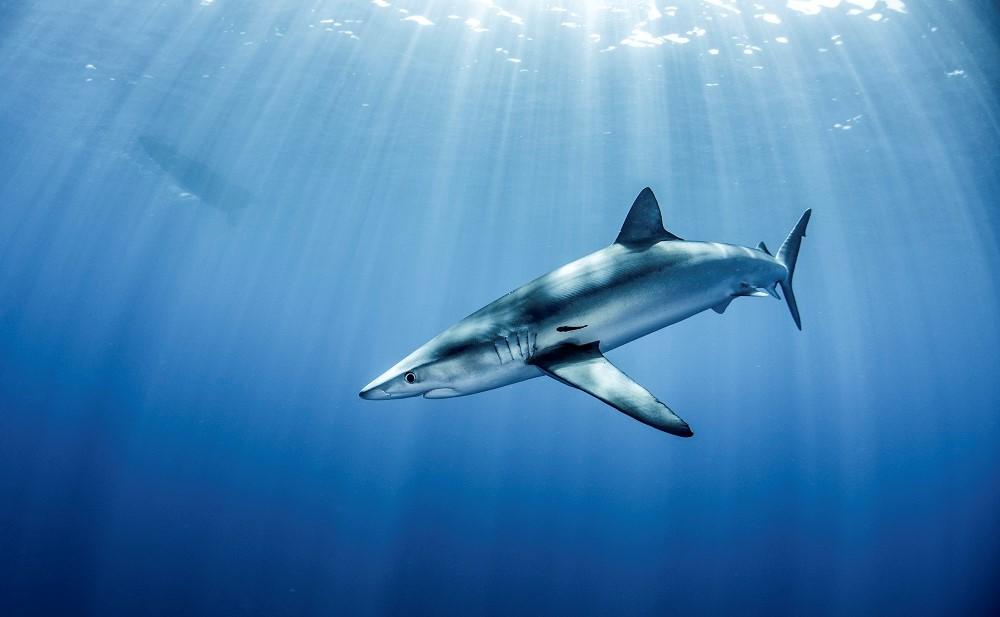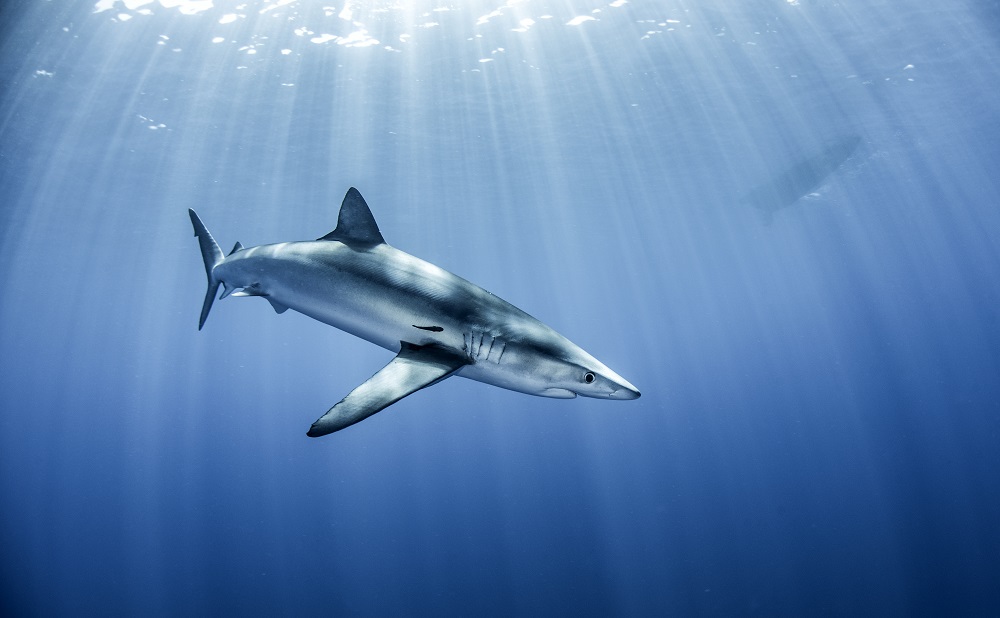
Sharks have been around for 450 million years, outliving the dinosaurs and soldiering on through several mass extinctions. Yet their numbers in the open oceans have plummeted by an alarming 70% over the past 50 years and many are endangered.
More than a third of shark and ray species are now threatened with extinction, driven by overfishing, habitat loss, pollution and climate change. This means that with environmental pressure increasing, time is running out to save the world’s sharks. As apex predators, sharks are crucial for maintaining the stability and health of marine ecosystems.
Yet unsurprisingly for species that roam extensively below the surface in the world’s oceans, there is much that remains unknown about the impacts that environmental changes are having.
Hard data about shark populations is required to inform conservation strategies and manage catch limits on the high seas, especially when these ocean areas often lie beyond national jurisdictions.
Researchers are therefore employing new methods to improve knowledge of sharks, including the use of genomic techniques that can help uncover their genetic history. Knowing more about how shark populations have changed over time can provide information about environmental pressures, how closely individuals are related and how much genetic diversity is being maintained, explained Professor Einar Eg Nielsen, a population geneticist at the Technical University of Denmark (DTU) in Lyngby.
‘You may see that in general a species is doing well. But it may mask that it’s doing good in some areas and badly in others,’ he said.
‘You need information on the populations in order to manage them in a proper way. But if you don’t have genomic markers with sufficient resolution, then you’re unable to disentangle the population structure.’
Jaw samples
That’s why the DiMaS project he co-led conducted genetic research on sharks. The initiative was aimed at expanding information on sharks’ recent history to help assess how they may react to future climate-change and fishing-related pressures.
The team focused on the shortfin mako shark (Isurus oxyrinchus), which is fished commercially but also unintentionally caught as by-catch in seas globally. The species is classified as endangered on the IUCN’s Red List, generally considered the definitive inventory of conservation status for the world’s species.
Researchers amassed almost 1,000 samples of jaws and vertebrae spanning three centuries from museums, national fishery institutes and personal collections, including modern samples from fishery institutes. After separating out the lower-quality ones, they then selected half for genomic analysis.
‘The problem with these beasts is that they are all over the place, so it’s difficult to get really good samples,’ said Prof. Nielsen. ‘But by joining forces with other institutions, we were able to get more samples so we could look at temporal patterns.’
Despite their severe decline in numbers, the resulting analysis has revealed some potential cause for cautious optimism about the makos’ long-term prospects for survival because the team found that their genetic diversity had not reduced significantly in recent years.
High levels of connectivity between different shortfin mako populations may have helped this, said Dr Romina Henriques, formerly at DTU, co-leader of DiMaS, and now a population geneticist at the University of Pretoria in South Africa.
‘The fact that there is this strong connectivity suggests a greater resilience,’ she said.
Connectivity wobbles
Yet things are not quite so straightforward. It seems that the level of connectivity has changed over time and that some historical populations may have been more isolated and therefore potentially more vulnerable, said Dr Henriques.
‘What I found very interesting is that this connectivity wobbles through time, so you have some populations of shortfin mako that appear more differentiated than others,’ she said. ‘What we think is that you probably do have some isolated populations, but there’s quite a bit of movement.’
Another caveat is that with their potential lifespan of 30 years or more, shortfin makos are relatively long-lived. Given that pressures from fishing only ramped up in the second half of last century, it may simply be that not enough time has elapsed for any recent population declines to have filtered through to a decrease in genetic diversity.
But regardless of what further research finds, the widespread movement of shortfin mako sharks and links between populations highlight the need for fishing and conservation to be managed regionally rather than just in individual areas, said Dr Henriques.
‘It means that conservation has to not just be national-based, but it has to be regional-based,’ she said. ‘It doesn’t matter if two or three countries decide “no more mako fishing”, because they will naturally move away from the protected areas.’
Depleted oxygen
Another important area of research is how climate change may be affecting the ocean habitat of sharks through its effect on oxygen levels, leaving the animals more vulnerable to overfishing.
Because warmer waters dissolve less oxygen, studies suggest that climate change is depleting levels in the oceans and leading to the expansion of so-called oxygen minimum zones (OMZs). It is thought that this could, in turn, be squeezing the areas of the ocean where many sharks, fish and other marine animals can exist into a smaller space.
‘One hypothesis is that sharks are vertically compressed into that top layer, into a smaller and smaller volume of water, and this lends itself to higher catches made by fishers,’ explained Professor David Sims, a marine ecologist at the Marine Biological Association in Plymouth and the University of Southampton, UK.
On the basis that much about these effects is currently unknown, the Ocean Deoxyfish project that Prof. Sims leads is exploring the phenomenon in sharks, as well as tunas. ‘Ultimately, what we want to do is to be able to predict the distribution of sharks in an ocean-deoxygenated world’, he said.
Such exploration has been aided by the developments made in tagging devices that can be attached to sharks’ fins. ‘Over the last 20 years, there have been real advances in marine telemetry – marine biologging, as it’s called – using miniature electronic devices to track sharks to inform about their movements, behaviour and ecology, and also their interaction with the environment,’ said Prof. Sims.
In the early stages of Ocean Deoxyfish, the results have broadly borne out the researchers’ hypothesis. In a study in the OMZ in the tropical eastern Atlantic off Africa, the team found that the habitat of blue sharks was vertically compressed. Their maximum dive depth seemed to be around 40% less compared with other areas, potentially heightening their vulnerability to fishing.
Cycle of doom
However, the picture is complicated because sharks may also benefit from increased opportunities for foraging in these compressed zones as the prey themselves seek to avoid hypoxic waters with low levels of oxygen.
‘There’s a self-perpetuating cycle of doom going on,’ said Prof. Sims. ‘The sharks are seeing opportunities for feeding, but the fishers are also taking advantage of an opportunity of being able to catch more sharks per unit time.’
The Ocean Deoxyfish researchers are developing increasingly sophisticated tracking tags that will record oxygen levels in addition to sharks’ movements and typical measurements such as temperature, pressure and depth. The data will be uploaded straight to satellites, avoiding the need to retrieve the tags.
The new tags will also capture video footage of what Prof. Sims describes as a ‘shark’s-eye view’ of the animals’ behaviour, enabling the researchers to see what they’re doing when they dive. He added that blue sharks do seem to have the capacity to at least undertake some dives into low-oxygen water, which he thinks may be associated with them feeding on squid that can tolerate these waters.
‘It’ll be amazing to capture that and find out what they’re doing down there,’ he said. ‘What we’re hoping is that we’ll have these tags catching the pursuit of these deep-water cephalopods [such as squid] in the oxygen-minimum zone.’
Ultimately, he hopes that projects like his will contribute to the long-term management of sharks and other species that live in the ocean.
‘Overfishing is reducing these populations to levels that they’ve never been at before,’ he said. ‘There has to be interaction between climate change research and fisheries management to a greater degree than there has been.’

